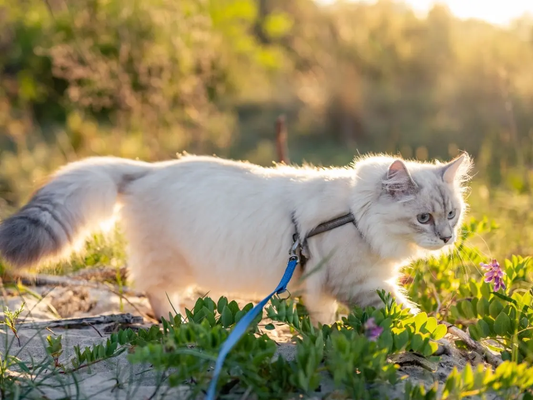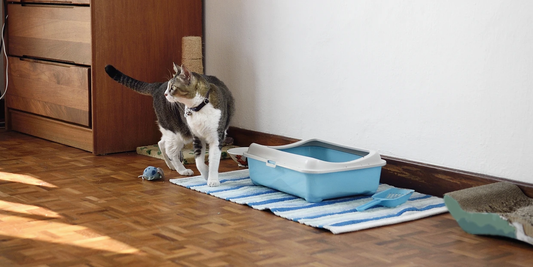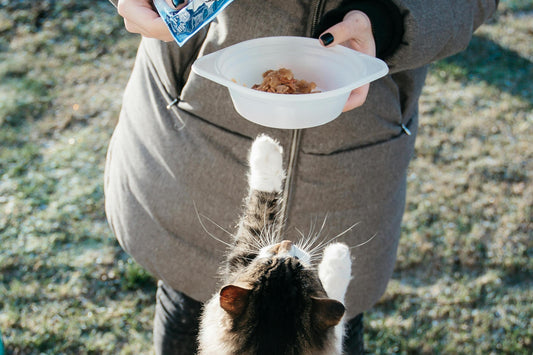Introduction
Introducing a new cat to your household can be an exciting time, but it's essential to be aware of potential warning signs that could indicate problems during the transition period. By understanding these signs and knowing how to address them, you can help ensure a smooth adjustment for both your new feline friend and your existing pets. In this comprehensive guide, we'll explore 5 crucial warning signs to watch out for when introducing cats, along with expert tips on how to handle each situation effectively.
Recognizing Signs of Stress
Bringing a new cat into your home can be stressful for both the new arrival and any existing pets. It's essential to recognize the signs of stress in cats to address them promptly and ensure a smooth transition. Signs of stress can include hiding, excessive meowing, loss of appetite, and aggressive behavior towards other pets or humans.
Engaging Paragraph
If you notice your new cat hiding under furniture or in secluded areas, it may indicate that they're feeling overwhelmed or anxious. Similarly, excessive meowing or vocalization can be a sign of distress, especially if it persists for an extended period. Keep an eye on your cat's eating habits, as a sudden loss of appetite could signal stress or illness. Additionally, aggressive behavior towards other pets or family members may indicate that your cat is feeling threatened or insecure in their new environment.
Understanding Territorial Behavior
Cats are territorial animals by nature, and introducing a new cat into a household can disrupt the existing hierarchy, leading to territorial conflicts. Understanding territorial behavior is crucial for managing introductions and preventing conflicts between cats.
Engaging Paragraph
Territorial behavior in cats can manifest in various ways, including marking, spraying, and aggression. If you notice your new cat engaging in these behaviors or if your existing cat starts displaying territorial aggression, it's essential to address the issue promptly. Providing separate feeding areas, litter boxes, and resting spots for each cat can help reduce territorial disputes and promote harmony in multi-cat households.
Monitoring Interactions
When introducing a new cat to your household, it's essential to closely monitor their interactions with existing pets to ensure they're getting along well. Monitoring interactions can help you identify any potential issues early on and take steps to address them before they escalate.
Engaging Paragraph
Keep a close eye on how your cats interact with each other, especially during the initial introduction period. Look for signs of aggression, such as hissing, growling, or swatting, and intervene if necessary to prevent conflicts. It's also essential to provide plenty of positive reinforcement and rewards for good behavior to encourage friendly interactions between your cats.
Establishing Safe Spaces
Creating safe spaces for your cats is essential, especially during the initial introduction period when they may feel anxious or insecure in their new environment. Safe spaces provide cats with a retreat where they can feel secure and relaxed away from potential stressors.
Engaging Paragraph
Set up separate safe spaces for each of your cats, equipped with cozy beds, hiding spots, and toys to keep them entertained. These safe spaces should be located in quiet areas of your home where your cats can retreat to when they need some time alone. Providing vertical space, such as cat trees or shelves, can also help cats feel safe and secure by allowing them to observe their surroundings from a height.
Addressing Health Concerns
Before introducing a new cat to your household, it's crucial to ensure that all pets are in good health and up to date on their vaccinations. Addressing health concerns before introductions can help prevent the spread of disease and minimize the risk of potential health issues arising during the transition period.
Engaging Paragraph
Schedule a visit to the veterinarian for your new cat to ensure they're healthy and free from any underlying medical conditions. It's also essential to keep your existing pets up to date on their vaccinations and flea treatments to prevent the spread of parasites and diseases. By addressing any health concerns proactively, you can help ensure a smooth transition for your new cat and minimize the risk of health-related issues arising during the introduction process.
5 Warning Signs to Know About When Introducing Cats
When introducing cats, it's crucial to be aware of potential warning signs that could indicate problems during the transition period. By recognizing these signs early on and taking steps to address them, you can help ensure a smooth adjustment for your new feline friend and promote harmony in your household.
Engaging Paragraph
Whether you're introducing a new cat to an existing pet or adding a second cat to your household, being vigilant for warning signs is essential. By understanding your cats' behaviors and needs and providing a supportive environment, you can help facilitate a successful introduction and build strong bonds between your furry companions.
FAQs (Frequently Asked Questions)
1. How long does it take for cats to adjust to each other?
It varies depending on the cats' personalities and the introduction process, but it typically takes anywhere from a few days to a few weeks for cats to adjust to each other.
2. Should I separate my cats if they're fighting?
Yes, if your cats are fighting, it's essential to separate them to prevent injuries. Provide each cat with their own space and reintroduce them gradually once they've calmed down.
3. What should I do if my cats aren't getting along?
Try to identify the source of the conflict and address any underlying issues, such as resource guarding or territorial aggression. Providing plenty of positive reinforcement and creating separate spaces for each cat can also help.
4. Is it normal for cats to hiss at each other when first introduced?
Yes, some hissing or growling is normal during the initial introduction period as cats establish boundaries and hierarchy. However, if the aggression persists or escalates, it's essential to intervene and address the underlying issues.
5. How can I help my cats bond with each other?
Encourage positive interactions between your cats by providing plenty of opportunities for play and socialization. Offering treats, engaging in interactive play sessions, and providing cozy resting spots can help foster bonding between your furry companions.
Conclusion
Introducing cats to each other can be a rewarding experience, but it's essential to approach the process with patience, understanding, and vigilance. By being aware of potential warning signs and taking proactive steps to address them, you can help ensure a smooth transition for your new feline friend and promote harmony in your household.








